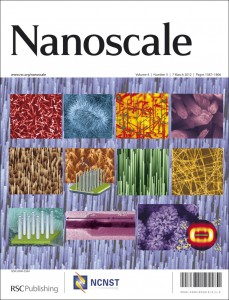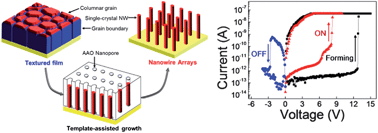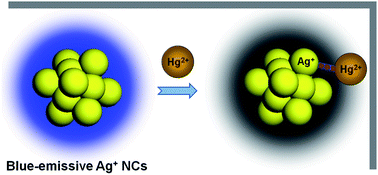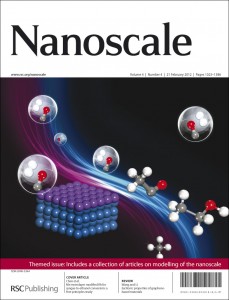
Photography courtesy of Megan Morr at Duke Photography
Co-Editor-in-Chief Jie Liu talks to Nanoscale about who has inspired him on his scientific journey so far and his ambitious plans to see Nanoscale being read across the globe.
Liu is the Jerry G. and Patricia Crawford Hubbard Professor of Chemistry at Duke University, USA and his research interests include carbon nanotubes, nanoelectronics, ZnO nanostructures and microporous carbon.
Professor Liu is now handling papers for Nanoscale. You can submit you high impact research to his Editorial Office.
Who inspired you to become a scientist?
My father. He was a high school chemistry teacher, and when I was really, really young he put the dream of becoming a scientist into my head. When I was young in China he started subscribing to scientific magazines. I started reading these articles and was amazed about what science can do and slowly he managed to sink this idea of becoming a scientist in my head and that just stayed.
How did you get involved in nanoscience?
In China when I was a college student with a chemistry major, I quickly realised that I liked physical chemistry a lot, and colloidal science was an area I got very interested in and choose as the topic of my undergraduate research project and then my Masters degree.
When I came to the US I was very lucky to get the chance to work with Charles Lieber on materials science and surface chemistry and we studied the atomic structure of very tiny domains of 2D crystals. That led me to be very interested in nanoscience.
When I was looking for a postdoc I had a chance to work with [Professor Richard E.] Smalley – before I applied for a position in his lab he came to Northeastern University in Boston to give a talk. I went there to listen to him talking about carbon nanotubes. He was such a good public speaker – the talk was great: very inspiring and interesting. I wrote him a letter: I am really interested in this, can you take me as a postdoc? And he did take me. I went to his lab and really started enjoying carbon nanotube research. I had a very exciting three years of post doc experience in Rick Smalley’s lab.
When I was looking for my own position, I found a Professor job at Duke University and decided to continue in the general field of carbon nanotubes and of course my research interests expanded beyond CNTs over the years– I am really interested in controlling the materials structure and properties at the nanoscale, so over the last 10 years we worked on CNTs, nanowires, nanoparticles, and surface nanolithography using an atomic force microscope. I really enjoy my research.
What do you think will be the next big breakthrough in your field?
In CNTs one direction is more fundamental: being able to control the helicity of the carbon nanotube is the next big thing. We are making progress along that direction, and there is theoretical work that suggests it might be possible but practically it is very difficult. It needs very precise instruments to be able to control the growth environment precisely, but I’m confident that if we have instrumentation much better than what we have now, we should be able to control the helicity of carbon nanotubes. Right now we can almost control the electronic properties of CNTs, we can make CNTs that are over 95% semiconducting – I think that is one of the directions for CNT research.
I really think nanoscience needs to be more influential and push the field forward at a faster pace in energy research – not just for energy capture, energy storage. Nanoscience is uniquely suited to solve all of these existing of these problems. It’s a very crowded field, many people are working in the field but progress is not that fast. I anticipate bigger breakthroughs in this field in the next couple of years, simply because of the amount of funding, the amount of people and the interest in this field. I think something will come up pretty soon.
What achievement are you most proud of?
The work we did that demonstrated that nanotubes can grow to extreme lengths, aligned by the gas flow; that is a milestone in the field. It demonstrated that if there is no external force that is stopping the growth of CNTs, nanotubes can grow really long and really fast. That was unexpected.
The recent work we did to selectively grow enriched semiconducting CNT arrays, I think with more work in this field we can definitely make the aligned CNT array a very good candidate for future electronic devices.
Another field that I’m very proud of but I’m not currently working on is the development of the electrochemical dip-pen nanolithography from my group. I think that opened the door for dip-pen nanolithography to become a more general, more versatile tool. It made people think about the chemistry underneath the AFM tip and enabled people to develop more AFM-based nanolithography technology.
What advice would you give to a young scientist?
I’m old now? <laughs> I learned from Smalley that if you treat science like your job it’s very hard and very time consuming, but if you treat science as a hobby, something you are very interested in, you want to dive in and play with it, you will have a different feeling about the work you are doing and you will fully enjoy it much more.
What are you most looking forward to most about being co-Editor-in-Chief of Nanoscale?
It’s a very unique opportunity. I was not looking to become Editor for a journal, but when Philip contacted me I looked at the opportunity and I thought, that’s a very good journal, it’s a very good opportunity, it’s my way of paying back to society because I’ve fully enjoyed my research experience in the lab for 10-15 years and I’ve published many papers with the help of different Editors. I appreciate their work, so I think I can get into their shoes and be able to help other people and to contribute to the field from a different direction. That’s what attracted me to this position and I think that with my experience in research, I can help the journal to become more successful by promoting great science and be able to contribute to the field at a different level.
What do you think Nanoscale has to offer authors?
I think Nanoscale is more international than journals by other publishers – that is something unique to Nanoscale. Nanoscale reaches a broader audience, the authors are more widely distributed across the whole world. I like the approach of RSC journals having people from different parts of the world contributing to the journal, like the distribution of Editors from the US, Asia and Europe. The Editors are experts in their field – I think that’s another advantage for the journal. Also the relationship with the Royal Society of Chemistry – that makes it very attractive.
What are your aspirations for Nanoscale?
One of my hopes is to see researchers at universities across the world reading the great new articles in Nanoscale every day. This will mean Nanoscale will become a journal that more people will read, more people will cite and more people will contribute to.



















